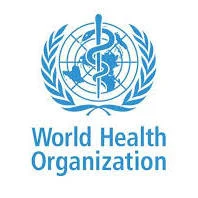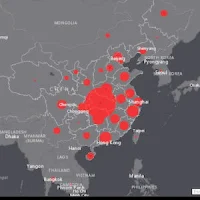Tedros Adhanom Ghebreyesus,Director-General of the World Health Organization (WHO), is reconvening the International Health Regulations Emergency Committee on 30 January, to advise on whether the current outbreak constitutes a public health emergency of international concern (PHEIC). The meeting is planned to start at 13:30 Geneva time.
By morning, 30 January, death toll from the novel
coronavirus, 2019-nCoV, has risen to 170 (all in China), and infection cases
jumped to 7,711, which is more than the country saw during the SARS (severe
acute respiratory syndrome) epidemic in 2002–2003. Only 68 of those cases have
been registered outside of mainland China. Cases recorded in Taiwan, Germany,
Vietnam and Japan involved patients who had not been to China.
You may also like: Despite Measures, Coronavirus Continues to Spread
China
A number of Chinese cities and provinces have extended the Lunar New Year holiday. Hubei province, where Wuhan, the epicentre of 2019-nCoV outbreak, is located, has said the holiday will last until at least until 14 February.
Medics of Wuhan have described overcrowded hospitals and a shortage of
test kits, protective gear and other medical equipment. Two new hospitals are
being built in Wuhan to fight the novel coronavirus, the state-run People's Daily reported.
These are located about 40km apart and to be finished in just six days.
Source: CGTN
One is the 1,000-bed Wuhan Huoshenshan Hospital, which is to be used
beginning 3 February. Construction on this site started on 24 January. Three
days later the authorities started building the other one, the Leishenshan
Hospital with 1,300 beds. It is due to open on 5 February. Two more hospitals are
planned for the cities of Huanggang and Zhenzhou.
Live footage from the two building sites can be watched here.
Other countries
Countries around the world, including Australia, the UK, North Korea and the U.S., have limited personal travel to and from China.
Australia is going to quarantine those evacuated
from Wuhan for two weeks on an island 2,000 miles off the coast of mainland
Australia.
U.S. President Donald Trump appointed a task force to coordinate the response
to the outbreak. The group has been meeting daily since 27 January. It was announced
on 29 January that experts from the U.S. Centers for Disease Control and Prevention
would be sent to China to help to contain the spread of the disease.
You may also like: Facilitating
Collaboration During Emergencies
WHO Decides on Emergency
The WHO Emergency Committee is meeting on 30 January to consider declaring the coronavirus a global crisis given the evidence that the disease can be transmitted before a person shows any signs of illness. The increase of infections in regions other than China might also play its role. But because this coronavirus is a ‘novel’ one, a decision needs to be made on its significance.
If a PHEIC is announced today, it would be the sixth global pandemic designated
as such. The first was for the 2009 Swine Flu (H1N1 virus). In 2014 two
declarations followed, related to an Ebola outbreak in West Africa and to Polio
in Pakistan, Cameroon, Equatorial Guinea and Syria. 2016 saw the Zika virus in
Brazil declared a PHEIC, while the Ebola outbreak in Democratic Republic of
Congo was designated as one in July last year. MERS was controversially not
deemed a PHEIC.
The new coronavirus has been so far estimated as less deadly
than SARS, which killed 1 in 10 infected patients (in total, 774 people in 17
countries), but it is still too early to properly assess its mortality rate. Another
coronavirus, MERS (Middle East Respiratory Syndrome), killed 1 in 3 patients,
and for seasonal flu the rate is about 1 in 1,000.
In its latest situation report WHO estimated the coronavirus risk level
within China as ‘very high,’ and on a regional and global level as ‘high.’
The NIAID’s Anthony Fauci and JAMA
Editor Howard Bauchner discussed the coronavirus outbreak on 27 January.
In the meantime, tech companies are
worried with the spread of misinformation about the novel coronavirus. Most
common so far is misinformation about the virus's presence in Australia as well
as its origins and how to cure it.
Sources: Bloomberg,
New
York Times, ABC,
Business
Insider


![Tuberculosis Diagnostics: The Promise of [18F]FDT PET Imaging Tuberculosis Diagnostics: The Promise of [18F]FDT PET Imaging](https://res.cloudinary.com/healthmanagement-org/image/upload/c_thumb,f_auto,fl_lossy,h_184,q_90,w_500/v1721132076/cw/00127782_cw_image_wi_88cc5f34b1423cec414436d2748b40ce.webp)







